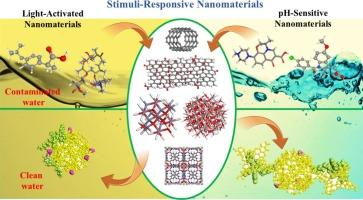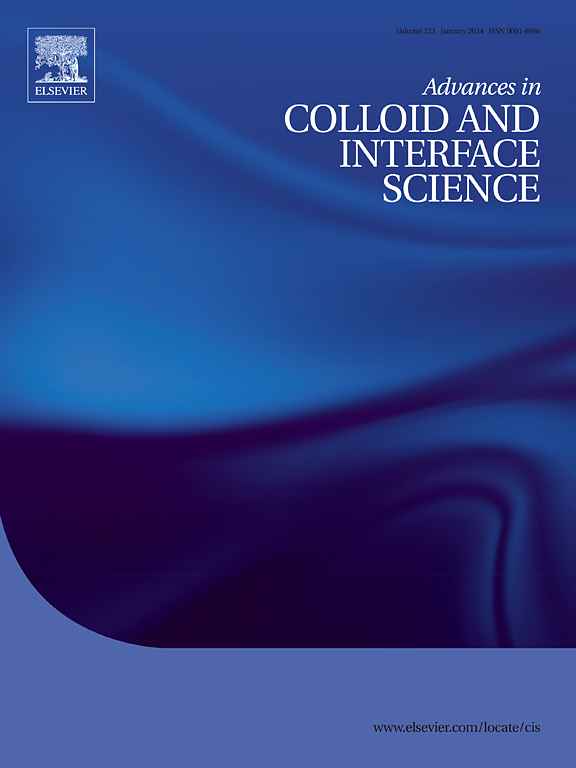Recent advances and applications of stimuli-responsive nanomaterials for water treatment: A comprehensive review
IF 15.9
1区 化学
Q1 CHEMISTRY, PHYSICAL
引用次数: 0
Abstract
The development of stimuli-responsive nanomaterials holds immense promise for enhancing the efficiency and effectiveness of water treatment processes. These smart materials exhibit a remarkable ability to respond to specific external stimuli, such as light, pH, or magnetic fields, and trigger the controlled release of encapsulated pollutants. By precisely regulating the release kinetics, these nanomaterials can effectively target and eliminate contaminants without compromising the integrity of the water system. This review article provides a comprehensive overview of the advancements in light-activated and pH-sensitive nanomaterials for controlled pollutant release in water treatment. It delves into the fundamental principles underlying these materials' stimuli-responsive behaviour, exploring the design strategies and applications in various water treatment scenarios. In particular, the article indicates how integrating stimuli-responsive nanomaterials into existing water treatment technologies can significantly enhance their performance, leading to more sustainable and cost-effective solutions. The synergy between these advanced materials and traditional treatment methods could pave the way for innovative approaches to water purification, offering enhanced selectivity and efficiency. Furthermore, the review highlights the critical challenges and future directions in this rapidly evolving field, emphasizing the need for further research and development to fully realize the potential of these materials in addressing the pressing challenges of water purification.

用于水处理的刺激响应纳米材料的最新进展和应用:综述
刺激响应型纳米材料的开发为提高水处理工艺的效率和效果带来了巨大希望。这些智能材料能够对特定的外部刺激(如光、pH 值或磁场)做出反应,并触发封装污染物的受控释放。通过精确调节释放动力学,这些纳米材料可以在不损害水系统完整性的情况下有效地锁定和消除污染物。这篇综述文章全面概述了用于水处理中污染物可控释放的光活化和 pH 值敏感纳米材料的研究进展。文章深入探讨了这些材料刺激响应行为的基本原理,探讨了各种水处理方案的设计策略和应用。文章特别指出,将刺激响应纳米材料集成到现有的水处理技术中,可以显著提高这些技术的性能,从而提供更具可持续性和成本效益的解决方案。这些先进材料与传统处理方法之间的协同作用可为水净化的创新方法铺平道路,提供更高的选择性和效率。此外,综述还强调了这一快速发展领域的关键挑战和未来方向,强调需要进一步研究和开发,以充分发挥这些材料在应对水净化紧迫挑战方面的潜力。
本文章由计算机程序翻译,如有差异,请以英文原文为准。
求助全文
约1分钟内获得全文
求助全文
来源期刊
CiteScore
28.50
自引率
2.60%
发文量
175
审稿时长
31 days
期刊介绍:
"Advances in Colloid and Interface Science" is an international journal that focuses on experimental and theoretical developments in interfacial and colloidal phenomena. The journal covers a wide range of disciplines including biology, chemistry, physics, and technology.
The journal accepts review articles on any topic within the scope of colloid and interface science. These articles should provide an in-depth analysis of the subject matter, offering a critical review of the current state of the field. The author's informed opinion on the topic should also be included. The manuscript should compare and contrast ideas found in the reviewed literature and address the limitations of these ideas.
Typically, the articles published in this journal are written by recognized experts in the field.

 求助内容:
求助内容: 应助结果提醒方式:
应助结果提醒方式:


